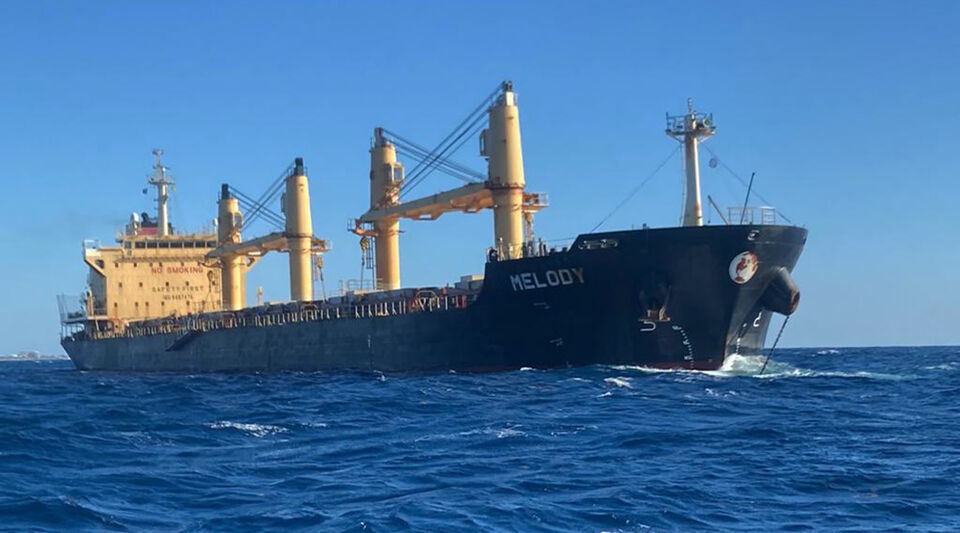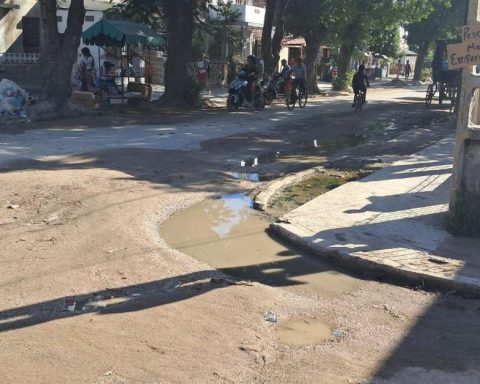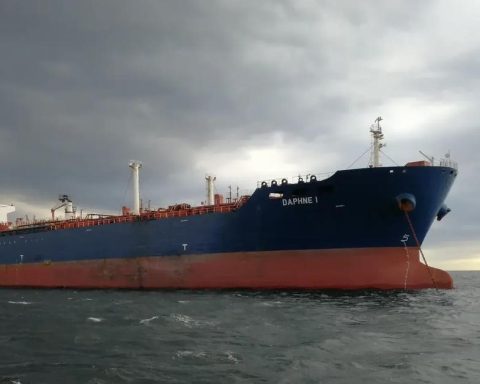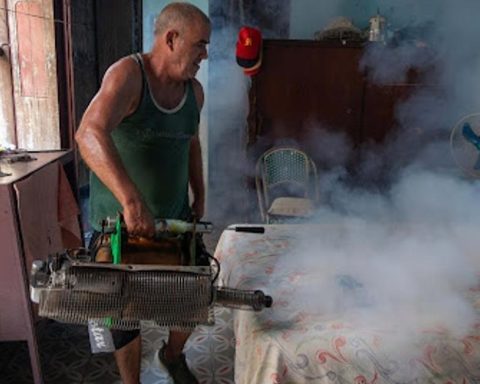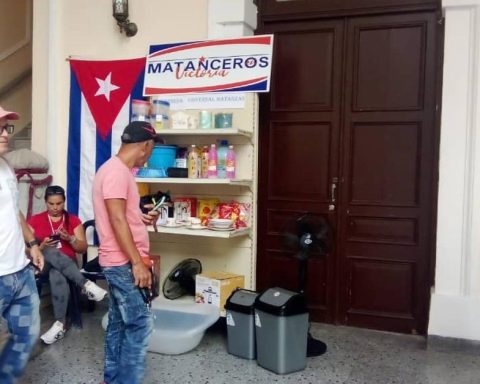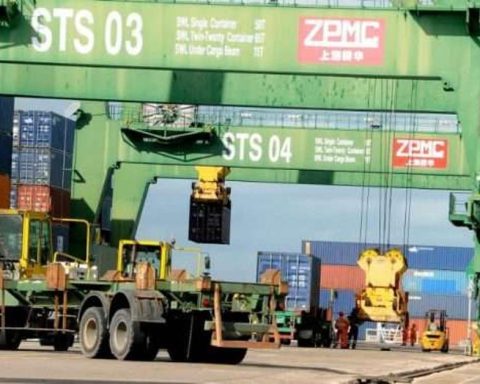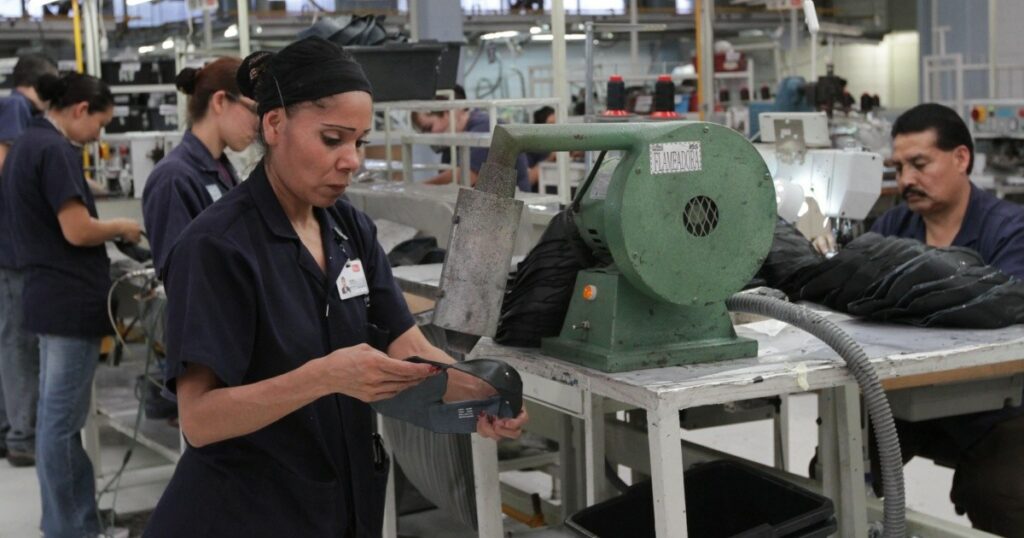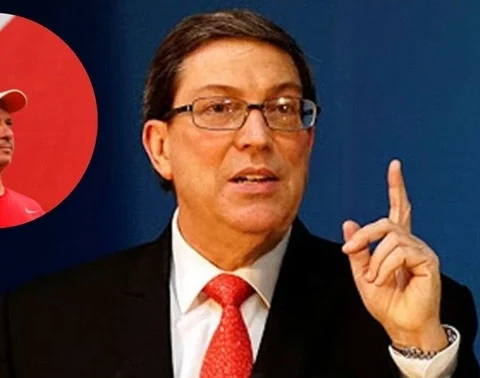The construction project of the Mayan Train, the emblematic project of the Government of the Mexican Andrés López Obrador, is causing an “ecocide”, denounces the activist José Urbina, Pepe Sharkin conversation with 14ymedio. The jungle in Puerto Morelos, south of Cancun, is being destroyed, he says, and the aquifer is being drilled for “an irresponsible decision.”
Urbina, a diver and member of the Sélvame del Tren collective, denounced the lack of environmental impact studies and the devastation of enormous forest extensions “to process the material they need for the embankment and unload the stones that come from Cuba or from Veracruz”.
The International Tribunal for the Rights of Nature estimates that in the construction of the train “more than 2,500 hectares of humid and dry forests will be lost, close to 9,000,000 trees.” The environmental damage will extend to “cenotes, caves and underground rivers” and the “modification of the habitats of endangered species, such as the jaguar.”
Pepe Sharkas Urbina is known on social networks, says that since last Wednesday the ship has been in deep waters off Puerto Morelos melody with 20,000 tons of rajón stone from Cienfuegos, of the 876,789 cubic meters that the Government of Mexico bought from the Island to process and use as ballast on the train that will travel 1,500 kilometers between Chiapas, Tabasco, Campeche, Yucatán and Quintana Roo.
“Due to the draft, the ship with Cuban material must remain in deep water,” explains the activist. The barge anchors in front of the Hotel Cid Marina area Navigator III and a tugboat, which will be used to move the stone material to a small dock that “is not prepared to handle this load.”
They have not presented it yet but @TrenMayaMX The MIA is authorized for a new road and to be able to invade it with Trucks. Without shame, they already have the ship on the coast, ready to begin with the violation of environmental laws, the National Park, the mangrove swamp and the precious life of the People. pic.twitter.com/jZuRSHhOYj
— Pepe Shark (@tiburon_pepe) March 6, 2023
Among environmentalists and activists, alarm is spreading due to the damage that could be caused by the landing of tons of rajón stone from the Island, in an area of the protected coral reef of the Mexican Caribbean of more than 350 kilometers and where some areas depth does not exceed 10 meters.
“This process, if done perfectly well, would not contaminate, but the risk is latent,” insists the ecologist. “One mistake and this material would have an unsuspected impact on an area of already very fragile coral health.”
The barrier reef, declared and protected as a National Park in 1998, is the second largest in the world, only behind that of Australia. The damage to species with protection status such as various species of coral and many other sea turtles is latent.
The “political urgency” to inaugurate the Mayan Train in December 2023, as López Obrador offered, has led to carrying out works without an environmental impact study, denounced José Urbina. The most recent damage was registered with the construction of a road that goes from Puerto Morelos to a collection center that is located in Leona Vicario, where the stone material brought from Cuba will be deposited and converted into ballast.
“300 trucks that will destroy, with their traffic, the tourist routine of the small town of Puerto Morelos, will transit daily through this road,” the activist said.
This Monday the Secretary of Sustainable Urban Territorial Development, Armando Lara De Nigris, acknowledged that just last Friday they presented the provisional Environmental Impact Statement for the construction of the road, when the mangroves have been devastated for two years in an accelerated manner.
? Definitive suspension? The reality looking for the Law to identify it and the propaganda of @TrenMayaMX sustained over those submitted by SEMARNAT, PROFEPA and the State Government, thus Fonatur imposes another ecocidal project in Quintana Roo. Who can stop them? We, with you Act! pic.twitter.com/r0zmKBZaO1
— Pepe Shark (@tiburon_pepe) February 10, 2023
While the Secretary of the Environment, María Luisa Albores González, proclaims that in the seven sections of the Mayan Train “there is final authorization for environmental permits and that they were given in a timely manner”, in practice it is quite the opposite.
The diver Urbina recalled that since last February, a judge ordered the definitive suspension of the work in section 5 of the Mayan Train for not having the corresponding authorization for the change of land use in many of the hectares that will be affected by the construction of the tracks.
The newspaper The universal published that the National Council of Science and Technology (Conacyt) hid a critical report on the Mayan Train prepared by 30 researchers in 2019, where it was shown that “the irrecoverable destruction of 1,288 archaeological sites violates the rights of 146,000 indigenous people, the lands contributed to the project and its development poles can never be recovered; in addition, the employment it will create will be precarious and temporary.”
This Monday, the general director of the National Fund for the Promotion of Tourism, Javier May Rodríguez, assured that through the Sembrando Vida program, the Mexican southeast is being reforested with “500 million trees” and, among other actions, “cenotes are protected”, the wildlife crossings and drainage works, in addition to the fact that the Mayan Train will use low sulfur diesel.
The member of the Sélvame del Tren collective denied the official by assuring that “no one has seen the trees planted”, that “putting a concrete roof on a cenote is not protecting it” and the wildlife passages “are actually the drains, the tubes that they have to put under the embankment for the water to pass”.
Mexico’s Maya Train project is intended to drive economic development to some of the country’s poorest areas. But scientists fear it will hurt unique ecosystems like Calakmul, part of the largest tropical forest in the Americas after the Amazon @AP_Climate https://t.co/q68bVpuK45 pic.twitter.com/ci6pqQEMmI
— Teresa de Miguel (@tdemigueles) February 3, 2023
The considered emblematic work of the Government of López Obrador is immersed in the controversy and shields in which it is a “national security” project the lack of transparency prevails about agreements, such as that of the purchase of rajón stone from Cuba. To date, no details have been given about its cost.
In May, the company Santo Domingo Inversiones offered General Gustavo Vallejo, head of the Felipe Ángeles Engineers Group, responsible for Sections 5 North, 6 and 7 of the Maya Train, stone material from Cienfuegos.
The company’s offer consisted of the sale of 1.2 million cubic meters of Cuban ballast at a price of $143 per cubic meter. It also promised to deliver this material before the month of July of this year in the ports of Progreso (Yucatán) or Dos Bocas (Tabasco).
The Government of Mexico took advantage of the relationship with the Island, with which it had already agreed to hire Cuban specialists for marginal areas, the purchase of the Abdala vaccine and the implementation of scholarships for medical students in Havana.
“In Cuba they will be grateful for the economic resources that come from the Mexican government,” said activist José Urbina.
________________________
Collaborate with our work:
The team of 14ymedio He is committed to doing serious journalism that reflects the reality of deep Cuba. Thank you for accompanying us on this long road. We invite you to continue supporting us, but this time becoming a member of our newspaper. Together we can continue transforming journalism in Cuba.
